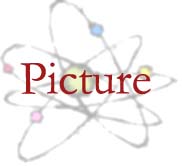| Antoine Lavoisier |
 |
|
|
|
||
|
Time Period: 1743-1794 Background: Antoine Lavoisier, a French chemist, attended the College Mazarin and studied chemistry, botany, astronomy, and mathematics. He published a documentary, Traité Elémentaire de Chimie, in 1789, which was considered to be the first textbook ever written on modern chemistry. He was a moderate constitutionalist in politics, and was beheaded in 1794 by radicals who held him in contempt. Belief: Lavoisier strongly denied the existence of Phlogiston, a weightless or nearly weightless substance found rich in metals and fire. All activities were the cause of the presence of Phlogiston; fire burns out in an enclosed space because it saturates the air with phlogiston, animals die in an enclosed space because the air becomes saturated with phlogiston, charcoal leaves little residue because it is composed mostly of phlogiston. This theory was generally accepted by the scientific world until problems came up. When some metals were calcined, the resulting calx was heavier than the initial metal, before it was calcined. Some supporters of the theory insisted that this phenomena occurred because in some metals, phlogiston had a negative weight. In other instances, they declared phlogiston to have a positive weight or no weight at all. Rather than accepting this absurd theory, Lavoisier proved that some metals gained weight because it reacted with air. Contribution: Lavoisier was credited with the establishment of the Law of Conservation of Mass, which stated that in a chemical reaction, matter is neither created or destroyed; it brought to the end the misconception of the existence of Phlogiston. Lavoisier was further credited with the invention of a system of chemical nomenclature, still largely in use today, and a list of elements in his book (Traité Elémentaire de Chimie) believed to be substances which could not be broken down further (oxygen, nitrogen, hydrogen, phosphorus, mercury, zinc, sulfur).
|
||
|
Sources "Lavoisier, Antoine." Wolfram Research. Eric W. Weisstein. <http://scienceworld.wolfram.com/biography/Lavoisier.html> "Lavoisier and the Law of Conservation and Mass." Copyright © 2001 by John L. Park. <http://dbhs.wvusd.k12.ca.us/Equations/Conserv-of-Mass.html> |
||
|
|
|
|